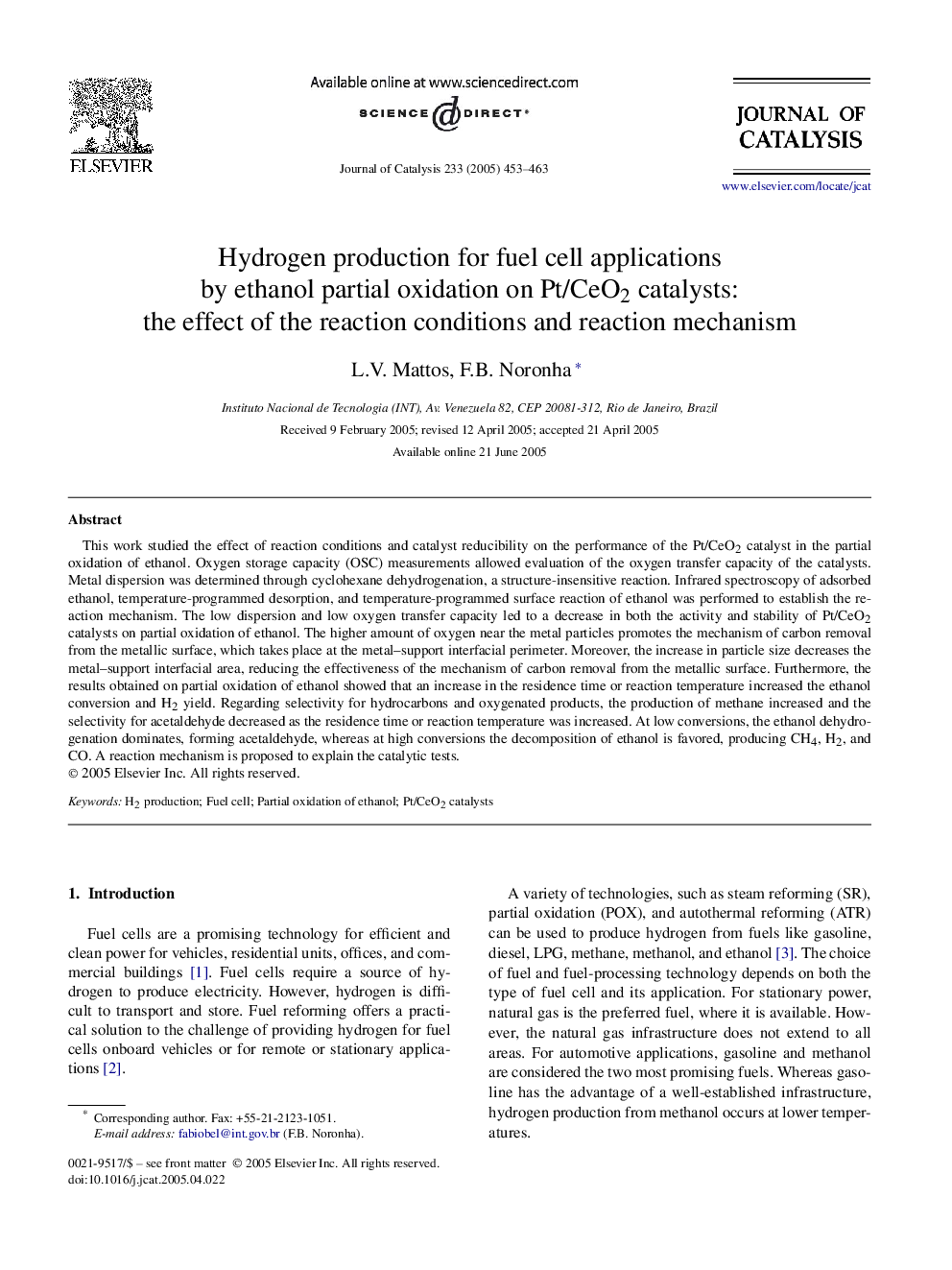| Article ID | Journal | Published Year | Pages | File Type |
|---|---|---|---|---|
| 10244491 | Journal of Catalysis | 2005 | 11 Pages |
Abstract
This work studied the effect of reaction conditions and catalyst reducibility on the performance of the Pt/CeO2 catalyst in the partial oxidation of ethanol. Oxygen storage capacity (OSC) measurements allowed evaluation of the oxygen transfer capacity of the catalysts. Metal dispersion was determined through cyclohexane dehydrogenation, a structure-insensitive reaction. Infrared spectroscopy of adsorbed ethanol, temperature-programmed desorption, and temperature-programmed surface reaction of ethanol was performed to establish the reaction mechanism. The low dispersion and low oxygen transfer capacity led to a decrease in both the activity and stability of Pt/CeO2 catalysts on partial oxidation of ethanol. The higher amount of oxygen near the metal particles promotes the mechanism of carbon removal from the metallic surface, which takes place at the metal-support interfacial perimeter. Moreover, the increase in particle size decreases the metal-support interfacial area, reducing the effectiveness of the mechanism of carbon removal from the metallic surface. Furthermore, the results obtained on partial oxidation of ethanol showed that an increase in the residence time or reaction temperature increased the ethanol conversion and H2 yield. Regarding selectivity for hydrocarbons and oxygenated products, the production of methane increased and the selectivity for acetaldehyde decreased as the residence time or reaction temperature was increased. At low conversions, the ethanol dehydrogenation dominates, forming acetaldehyde, whereas at high conversions the decomposition of ethanol is favored, producing CH4, H2, and CO. A reaction mechanism is proposed to explain the catalytic tests.
Related Topics
Physical Sciences and Engineering
Chemical Engineering
Catalysis
Authors
L.V. Mattos, F.B. Noronha,
